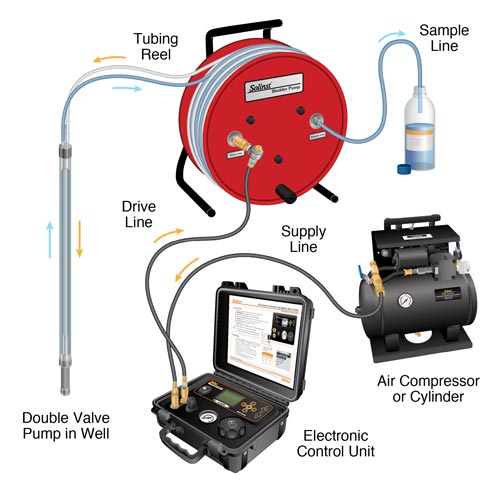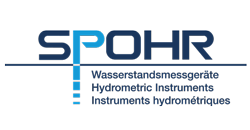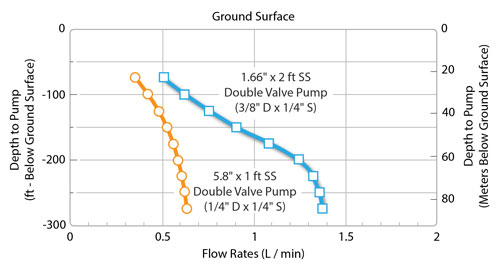Pump Operation
When the Double Valve Pump is placed in a well or borehole, water rises inside the pump and the tubing to static level. Gas supplied from the Controller pushes down on the water column contained in the drive line tubing, closing the check valve at the base of the pump. This forces water up the sample line tubing.
A vent period, during which the gas is released, allows hydrostatic pressure to refill the pump and drive line with sample water. The top check valve prevents water in the sample line from falling back into the pump body. This pressurization and vent cycle is repeated to bring water to the surface.
For proper collection of volatiles, the pressure applied must never be high enough, nor the drive period long enough, to enable gas to enter the body of the pump and aerate the sample. If operated properly, "air" will never come in contact with the sample water, which produces high quality VOC samples comparable to those of a bladder pump.
Flow rates vary with depth of pump below surface, depth below water level, size of drive and sample tubing, drive and vent cycle times, gas pressure applied, aquifer recharge, and size of pump body.




 German
German English
English